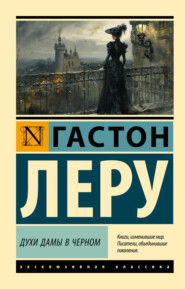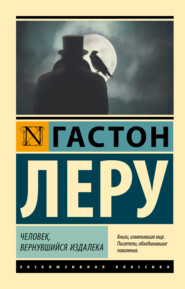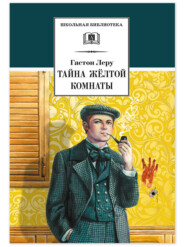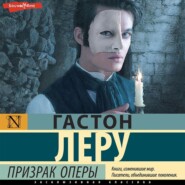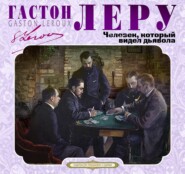По всем вопросам обращайтесь на: info@litportal.ru
(©) 2003-2024.
✖
The Mystery of the Yellow Room
Автор
Год написания книги
2018
Настройки чтения
Размер шрифта
Высота строк
Поля
“And was the wound on her temple a bad one?” he asked presently.
“Terrible.”
“With what weapon was it made?”
“That is a secret of the investigation.”
“Have you found the weapon—whatever it was?”
The magistrate did not answer.
“And the wound in the throat?”
Here the examining magistrate readily confirmed the decision of the doctor that, if the murderer had pressed her throat a few seconds longer, Mademoiselle Stangerson would have died of strangulation.
“The affair as reported in the ‘Matin,’” said Rouletabille eagerly, “seems to me more and more inexplicable. Can you tell me, Monsieur, how many openings there are in the pavilion? I mean doors and windows.”
“There are five,” replied Monsieur de Marquet, after having coughed once or twice, but no longer resisting the desire he felt to talk of the whole of the incredible mystery of the affair he was investigating. “There are five, of which the door of the vestibule is the only entrance to the pavilion,—a door always automatically closed, which cannot be opened, either from the outer or inside, except with the two special keys which are never out of the possession of either Daddy Jacques or Monsieur Stangerson. Mademoiselle Stangerson had no need for one, since Daddy Jacques lodged in the pavilion and because, during the daytime, she never left her father. When they, all four, rushed into “The Yellow Room”, after breaking open the door of the laboratory, the door in the vestibule remained closed as usual and, of the two keys for opening it, Daddy Jacques had one in his pocket, and Monsieur Stangerson the other. As to the windows of the pavilion, there are four; the one window of The Yellow Room and those of the laboratory looking out on to the country; the window in the vestibule looking into the park.”
“It is by that window that he escaped from the pavilion!” cried Rouletabille.
“How do you know that?” demanded Monsieur de Marquet, fixing a strange look on my young friend.
“We’ll see later how he got away from “The Yellow Room”,” replied Rouletabille, “but he must have left the pavilion by the vestibule window.”
“Once more,—how do you know that?”
“How? Oh, the thing is simple enough! As soon as he found he could not escape by the door of the pavilion his only way out was by the window in the vestibule, unless he could pass through a grated window. The window of “The Yellow Room” is secured by iron bars, because it looks out upon the open country; the two windows of the laboratory have to be protected in like manner for the same reason. As the murderer got away, I conceive that he found a window that was not barred,—that of the vestibule, which opens on to the park,—that is to say, into the interior of the estate. There’s not much magic in all that.”
“Yes,” said Monsieur de Marquet, “but what you have not guessed is that this single window in the vestibule, though it has no iron bars, has solid iron blinds. Now these iron blinds have remained fastened by their iron latch; and yet we have proof that the murderer made his escape from the pavilion by that window! Traces of blood on the inside wall and on the blinds as well as on the floor, and footmarks, of which I have taken the measurements, attest the fact that the murderer made his escape that way. But then, how did he do it, seeing that the blinds remained fastened on the inside? He passed through them like a shadow. But what is more bewildering than all is that it is impossible to form any idea as to how the murderer got out of “The Yellow Room”, or how he got across the laboratory to reach the vestibule! Ah, yes, Monsieur Rouletabille, it is altogether as you said, a fine case, the key to which will not be discovered for a long time, I hope.”
“You hope, Monsieur?”
Monsieur de Marquet corrected himself.
“I do not hope so,—I think so.”
“Could that window have been closed and refastened after the flight of the assassin?” asked Rouletabille.
“That is what occurred to me for a moment; but it would imply an accomplice or accomplices,—and I don’t see—”
After a short silence he added:
“Ah—if Mademoiselle Stangerson were only well enough to-day to be questioned!”
Rouletabille following up his thought, asked:
“And the attic?—There must be some opening to that?”
“Yes; there is a window, or rather skylight, in it, which, as it looks out towards the country, Monsieur Stangerson has had barred, like the rest of the windows. These bars, as in the other windows, have remained intact, and the blinds, which naturally open inwards, have not been unfastened. For the rest, we have not discovered anything to lead us to suspect that the murderer had passed through the attic.”
“It seems clear to you, then, Monsieur, that the murderer escaped—nobody knows how—by the window in the vestibule?”
“Everything goes to prove it.”
“I think so, too,” confessed Rouletabille gravely.
After a brief silence, he continued:
“If you have not found any traces of the murderer in the attic, such as the dirty footmarks similar to those on the floor of “The Yellow Room”, you must come to the conclusion that it was not he who stole Daddy Jacques’s revolver.”
“There are no footmarks in the attic other than those of Daddy Jacques himself,” said the magistrate with a significant turn of his head. Then, after an apparent decision, he added: “Daddy Jacques was with Monsieur Stangerson in the laboratory—and it was lucky for him he was.”
“Then what part did his revolver play in the tragedy?—It seems very clear that this weapon did less harm to Mademoiselle Stangerson than it did to the murderer.”
The magistrate made no reply to this question, which doubtless embarrassed him. “Monsieur Stangerson,” he said, “tells us that the two bullets have been found in “The Yellow Room”, one embedded in the wall stained with the impression of a red hand—a man’s large hand—and the other in the ceiling.”
“Oh! oh! in the ceiling!” muttered Rouletabille. “In the ceiling! That’s very curious!—In the ceiling!”
He puffed awhile in silence at his pipe, enveloping himself in the smoke. When we reached Savigny-sur-Orge, I had to tap him on the shoulder to arouse him from his dream and come out on to the platform of the station.
There, the magistrate and his Registrar bowed to us, and by rapidly getting into a cab that was awaiting them, made us understand that they had seen enough of us.
“How long will it take to walk to the Chateau du Glandier?” Rouletabille asked one of the railway porters.
“An hour and a half or an hour and three quarters—easy walking,” the man replied.
Rouletabille looked up at the sky and, no doubt, finding its appearance satisfactory, took my arm and said:
“Come on!—I need a walk.”
“Are things getting less entangled?” I asked.
“Not a bit of it!” he said, “more entangled than ever! It’s true, I have an idea—”
“What’s that?” I asked.
“I can’t tell you what it is just at present—it’s an idea involving the life or death of two persons at least.”
“Do you think there were accomplices?”
“I don’t think it—”
We fell into silence. Presently he went on:
“It was a bit of luck, our falling in with that examining magistrate and his Registrar, eh? What did I tell you about that revolver?” His head was bent down, he had his hands in his pockets, and he was whistling. After a while I heard him murmur:
“Poor woman!”







